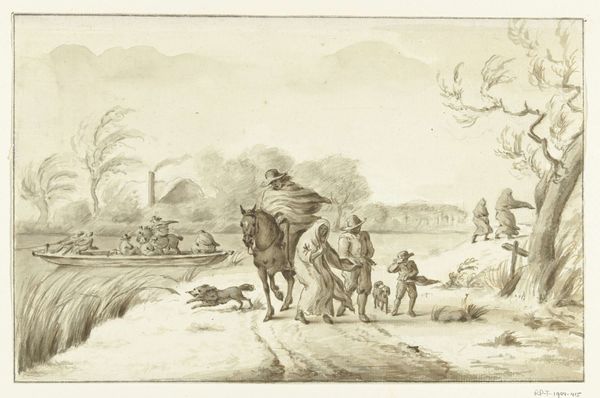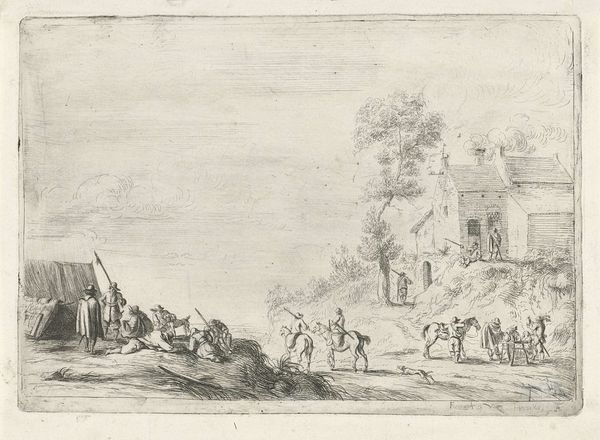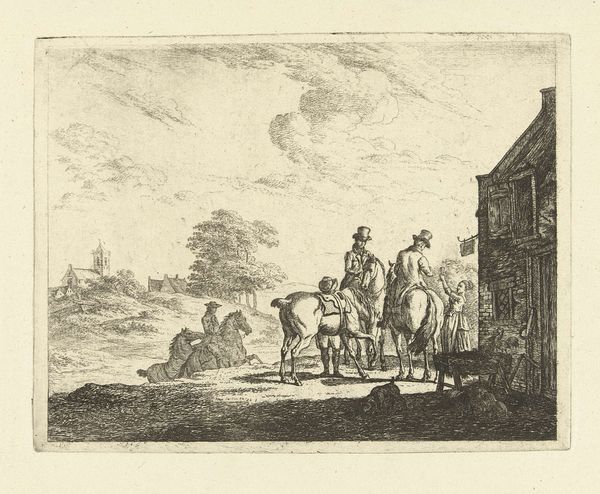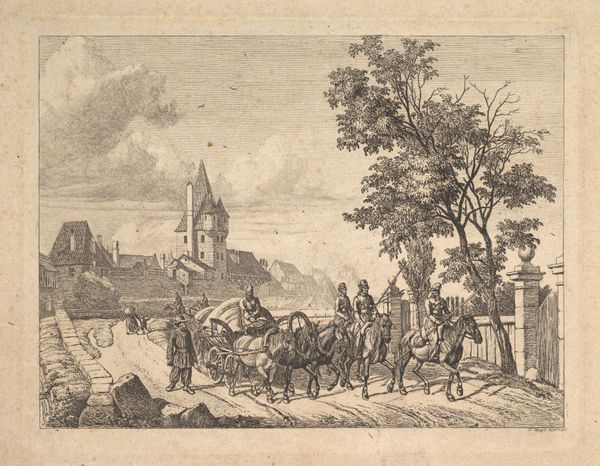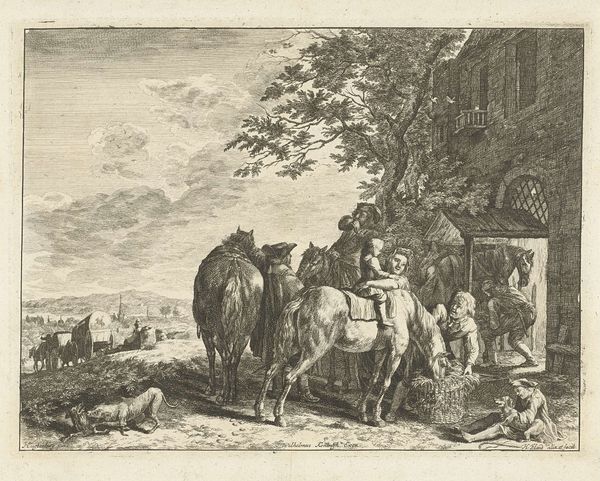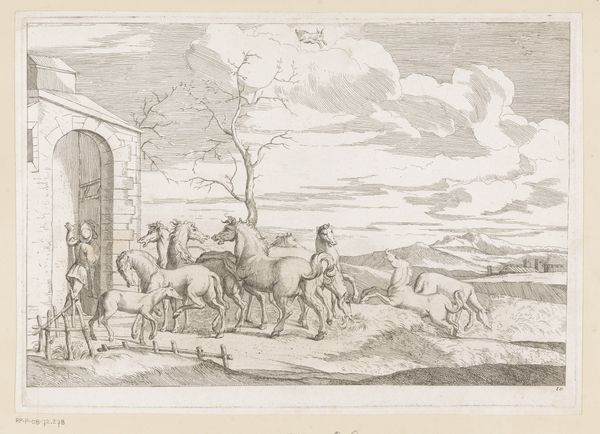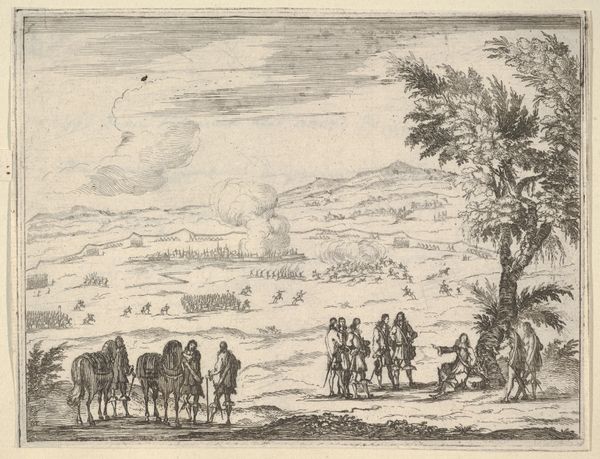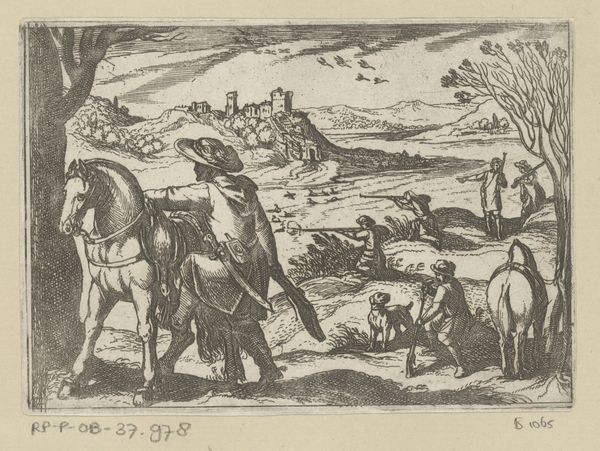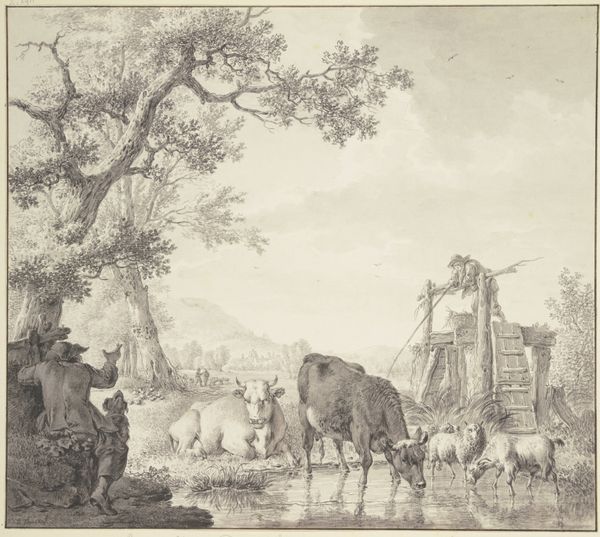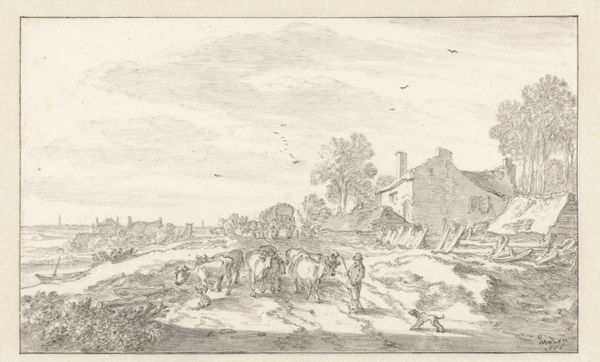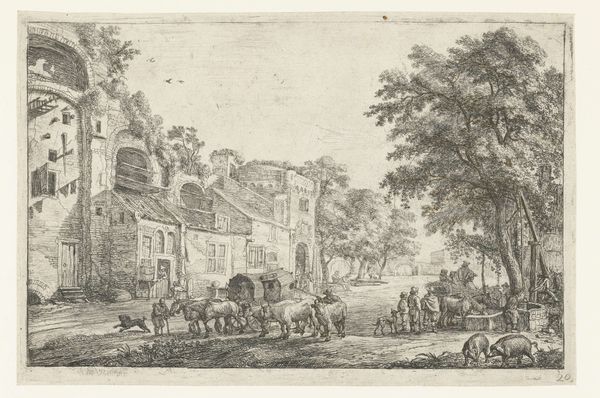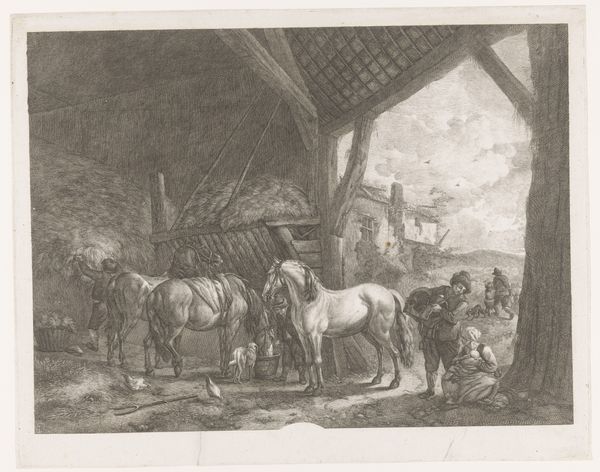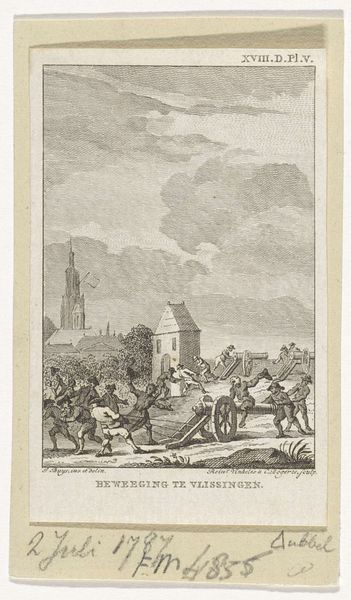
drawing, pencil
#
drawing
#
dutch-golden-age
#
pencil sketch
#
dog
#
landscape
#
figuration
#
pencil
#
horse
#
watercolour illustration
#
genre-painting
Dimensions: height 448 mm, width 556 mm
Copyright: Rijks Museum: Open Domain
Curator: Here we have "Vermaak voor een herberg," or "Entertainment Before an Inn," a drawing attributed to Johannes de Groot the Younger, dating roughly between 1698 and 1796. It’s rendered in pencil, a medium that gives it a delicate, almost ephemeral quality. Editor: My first impression is a scene teeming with life! Despite the muted tones, there's a distinct feeling of lively activity. The prancing horse really catches my eye. What a powerful image! Curator: It certainly encapsulates the hustle and bustle of Dutch Golden Age tavern culture. We see figures engaged in various activities: drinking, conversing, tending to horses. The inn was, of course, a central social institution. De Groot likely drew this scene from life, reflecting societal norms around public gatherings. Editor: The rearing horse strikes me as a key element. It isn't merely a horse; it represents a spirited, untamed energy. Horses in art often symbolize nobility, power, and virility. Perhaps it's commenting on the somewhat boisterous, uncontrolled nature of those enjoying the inn’s "vermaak," or entertainment. Curator: An interesting take! I am more prone to viewing the horse as another aspect of tavern life – a means of transport. Inns, as spaces where social classes met, played a vital role in disseminating information, both commercially and politically, so imagery connected to travel reflects that ongoing activity. Editor: While its functional aspect is undeniable, look closer at how the artist depicts its rearing stance and billowing mane. There’s undeniable drama. I would hazard it's a loaded metaphor. Curator: You might have a point about the theatrics, however, what intrigues me more is how these gatherings were policed – who was allowed access and under what conditions? These inns often existed under licenses. De Groot, in offering such a specific vista, presents a study of 18th-century regulations surrounding hospitality. Editor: That context is definitely interesting. Still, one cannot dismiss the raw, visceral feeling the piece evokes. It’s a snapshot of everyday joy – or, depending on the rearing horse’s meaning, maybe a subtle warning about excess. It’s hard not to read an active cultural symbolism, intended or otherwise, into that central dynamic image. Curator: Indeed. It showcases not only De Groot's technical skill with pencil, but also an artistic record of Dutch social history in miniature. Editor: A convergence of a moment captured and its symbols re-interpreted throughout history: It is a lively composition from multiple points of view, isn’t it?
Comments
No comments
Be the first to comment and join the conversation on the ultimate creative platform.
